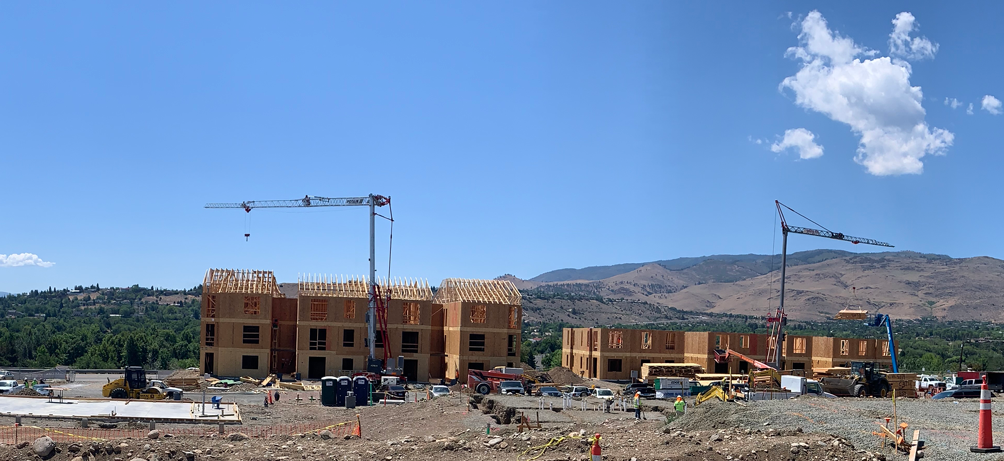Thank you for your interest in Potain self-erecting tower cranes.
Please fill out the form below and a crane expert will contact in 1-3 business days.
We use cookies on our website to give you the most relevant experience by remembering your preferences and repeat visits. By clicking “Accept”, you consent to the use of ALL the cookies. To learn more view our cookie policy.
Davis Company Fast-Tracks Apartment Project with Potain Self-Erecting Tower Crane
Displayed at CONEXPO 2020 earlier this year, a Potain Hup M 28-22 self-erecting tower crane is now busy at work helping erect a 192-unit apartment complex in northwest Reno, Nevada. The crane belongs to Davis Company, a local general contractor, and is the first Hup M 28-22 model to be deployed in North America.
One Crane, Multiple Uses
The crane is proving to be a valuable tool for Davis Company. It is supporting several of the tasks performed at the apartment complex site, eliminating the need for other equipment such as forklifts, and also reducing labor costs.
“This is a prefab job and the crane is very useful to set walls, floor modules, and trusses, among many other tasks,” said Jim Smith, job foreman at Davis Company. “All of these jobs would be much harder without a self-erecting tower crane. The number one advantage the crane offers is placing the prefab components right where they go. It saves us time and money to be able to fabricate components offsite and just lift them directly off the truck to their location on the construction site.”
Drive Efficiency
Another great benefit to self-erecting tower cranes on multi-unit housing construction sites is the crane’s mobility, reach and ability to perform many different tasks throughout the working day. Contractors can deploy a self-erecting crane between two home construction sites, for example, and reap the advantages of a much more efficient building process.
“Whereas a job with any of our other cranes would require an eight to 10-man crew to get the job done, the Hup M 28-22 enables us to require only a six-man crew,” said Dennis Davis, founder and owner of Davis Company. “This saves us time by allowing us to utilize our crew in other areas of the job at the same time if needed, and if not, it saves us money in labor costs.”
As for why Dennis Davis chose the crane over more conventional equipment such as telehandlers and mobile cranes, the answer is simple: “The Hup M 28-22’s reach and tip capacity is much greater,” he said.
The crane should remain at the site until early 2021, when the development is scheduled for completion.
Certified Potain dealer Compass Equipment, based in nearby Gilbert, Arizona, supplied the crane to Davis Company, and is certain the crane will continue to catch the attention of other homebuilders interested in building more efficiently.
